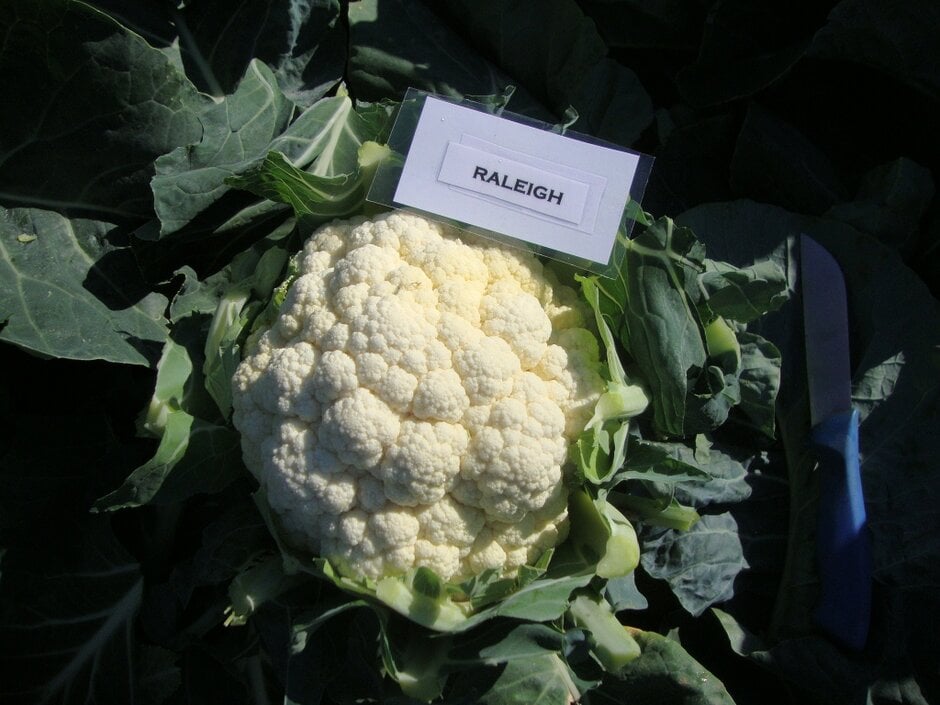Brassica oleracea (Botrytis Group) 'Raleigh'
cauliflower 'Raleigh'
A Summer cropping cauliflower variety producing pure white curds, forming a domed head, encased in vigorous blue-green leaves. It has an excellent flavour and shows good resistance to 'pinking' that makes it great for the kitchen as well as for exhibiting. Harvest between July and September

Size
Ultimate height
0.5–1 metresTime to ultimate height
1 yearUltimate spread
0.1–0.5 metresGrowing conditions
Moisture
Well–drained, Moist but well–drainedpH
Neutral, AlkalineColour & scent
| Stem | Flower | Foliage | Fruit | |
| Spring | ||||
|---|---|---|---|---|
| Summer | Blue Green | |||
| Autumn | Blue Green | |||
| Winter |
Position
- Full sun
Aspect
South–facing or West–facing
Exposure
Sheltered Hardiness
H3Botanical details
- Family
- Brassicaceae
- Native to GB / Ireland
- No
- Foliage
- Deciduous
- Habit
- Clump forming
- Genus
Brassicas can be annual, biennial or perennial plants, most are upright with alternate, often glaucous leaves, long taproots and clusters of cross-shaped, yellow or white flowers. The genus includes a number of species bred to produce food crops, such as cabbages, turnips, mustards and oilseed rape, as well as others grown for their ornamental value
- Name status
Accepted
How to grow
Cultivation
Grow in fertile, moist but well drained soil in full sun. Sow direct between April and June and transplant to final location by end of June. See cauliflower cultivation for further advice
Propagation
Propagate by seed. See sowing vegetable seeds or sowing seeds indoors
Suggested planting locations and garden types
Pruning
No pruning required
Pests
May be susceptible to birds, cabbage caterpillars, cabbage gall weevil, cabbage root fly, cabbage whitefly, cutworms, flea beetle, mealy cabbage aphid, slugs and snails, swede midge
Diseases
May be susceptible to black rot, club root, downy mildew, grey mould, foot and root rot, leaf spot, white blister
Get involved
The Royal Horticultural Society is the UK’s leading gardening charity. We aim to enrich everyone’s life through plants, and make the UK a greener and more beautiful place.